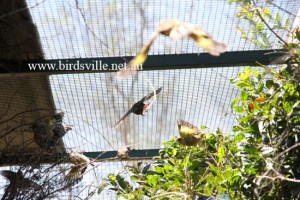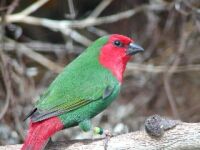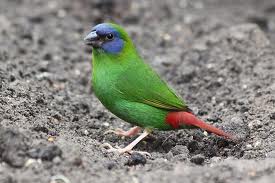Introducing a new bird to your animals and other birds
With any new arrival, we recommend leaving your bird isolated from other animals in the house for at least 2 weeks. This allows the resident animals to get used to the new arrival.
Bringing a new bird home
This is an explanation of why new pet birds should be quarantined for at least 2 weeks.
If you already have birds and plan to introduce a new bird to a friend or a flock, it is important for a number of reasons to soft release them. Just throwing a new arrival into a cage with a resident bird can be a disaster. If the resident bird is aggressive or protective of its environment, then the new arrival could be attacked. Baby birds are very susceptible as they will not be able to stick up for or defend them self. A new arrival of an adult could go either way if one of them is aggressive. The same goes for disease, the new arrival could be harboring a disease and spread it to the original bird as well.
The arrival of a young bird with an undeveloped immune system and stress of moving to a new environment then being introduced to the seemingly healthy original bird could fall sick from a the “asymptomatic original bird” As many birds can be carriers of a pathogen with no visible issues or problems. When any bird becomes stressed, their immune system drops and may succumb to a pathogen that an otherwise fully functioning immune system would fight off, this is worse off for baby birds as they already have an undeveloped immune system. To read more about pathogens and stress please click on Common Bird Illnesses.
Soft releasing is where the new arrival or arrivals are placed in a holding cage in visible view of the other birds. Birdsville have many holding cages and hospital cages that will work perfectly for this purpose. This allows the new arrival to recover from the stress of arriving to a new environment build up their immune system and get used to the sites and sound of the resident birds or other animals they are about to be introduced to. If your newly arrived bird has an undesirable pathogen, it is more than likely you will see an issue within this period of time. This process safeguards not only the new arrivals but also your resident birds.
Some birds can be very stubborn and take time to get used to each other, even after the 2 weeks always keep an eye on them, if one bird is aggressive towards the other then you should give them another week but socialize them in an area outside of the cage such as a lounge room r somewhere they both are not used to. This should get them more and more comfortable with each other over time.
Mixed species aviary
The idea of mixing different species in the same cage or aviary is nearly as old as keeping birds in captivity.
Mixing different species of birds is very complex and unfortunately there are no fool proof rules when it comes to mixing different species of birds as all birds are individuals and unpredictable. Birds that are normally placid and peaceful can become aggressive in different circumstances yet species which are known for aggression can often be kept in mixed collections and live harmony.
The difficulty of mixing different species of birds is inversely proportional to the size of the cage or aviary, basically the larger the cage the fewer the problems. If the space is large enough you should be able to house a number of different species of even large parrots together with no problems. If one bird is aggressive towards another that bird must be able to escape to a part of the aviary where it is not harassed or attacked.
The smaller the aviary the more critical the selection of the birds placed with in it.
So, for the average small backyard aviary if you keep parrots such as Indian ringnecks it would be very unwise to place budgies as these birds are aggressive and would more than likely kill the budgies in a short period of time. Although all birds are individuals and unpredictable some birds can be mixed in a small cage such as my pet birds which I keep at home which is a Quaker and a Caique.
Different species of finch are mixed and bred successfully together, this works well with most species as they naturally flock in the wild with other species. Most finches live well with other types, but there are still some semi anti-social finches which will attack and harass other species of finches causing death.
Compatibility in species of birds
It is critical for the health of your birds and to have success in general health if its just a beautiful enclosure or aviary or if your goal so for prolific breeding to house your birds with appropriate birds. The first rule especially with parrots is have similar sized birds housed together as a big parrot could one morning wake up on the wrong side of the perch and with one bite kill a smaller parrot. You also need to research the temperament of different species as some are known to be placid and some to be quite aggressive. You also need to consider the diet, some birds will have completely different nutritional needs, as it will be better to have birds that all can consume a similar diet.



